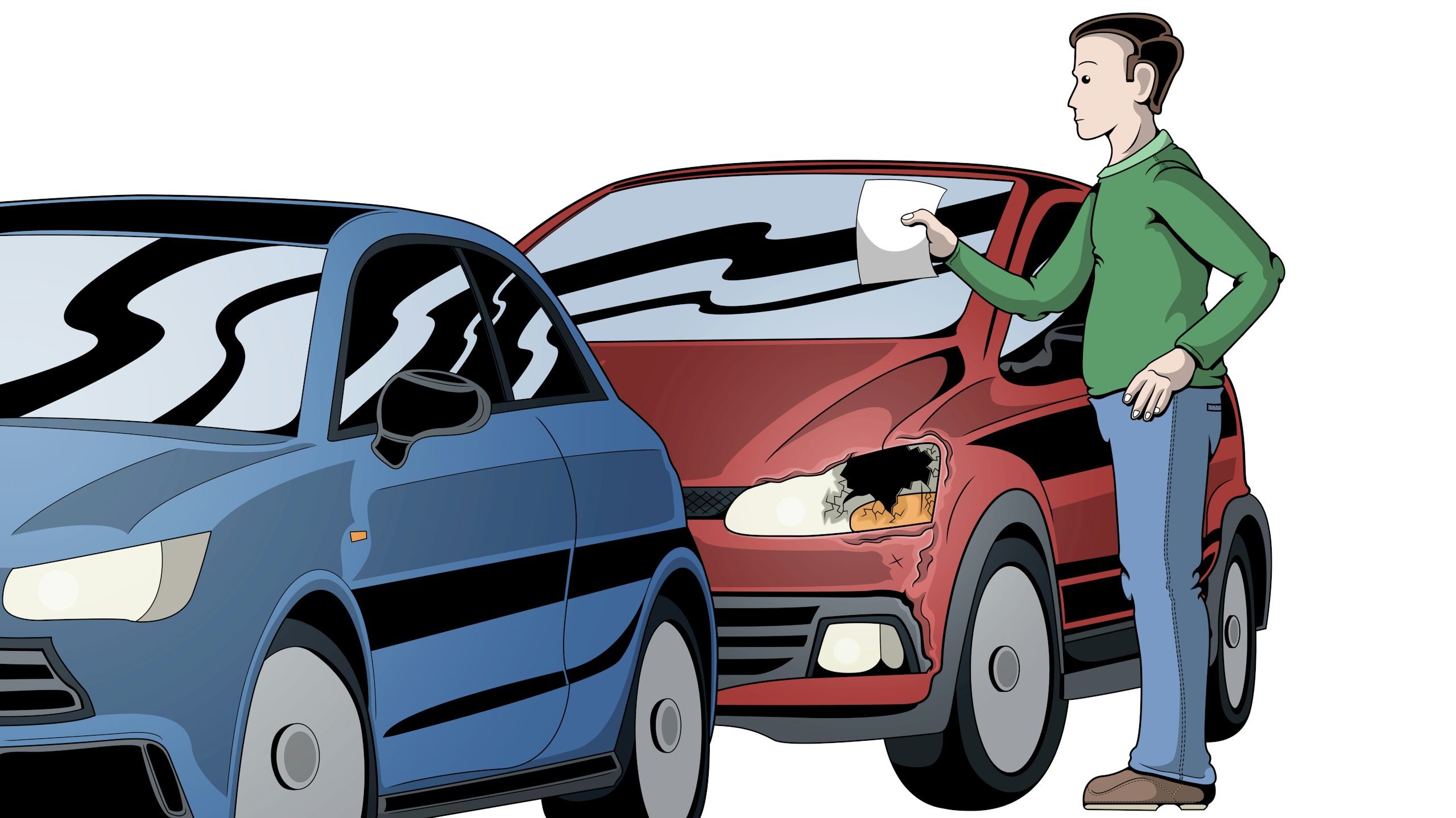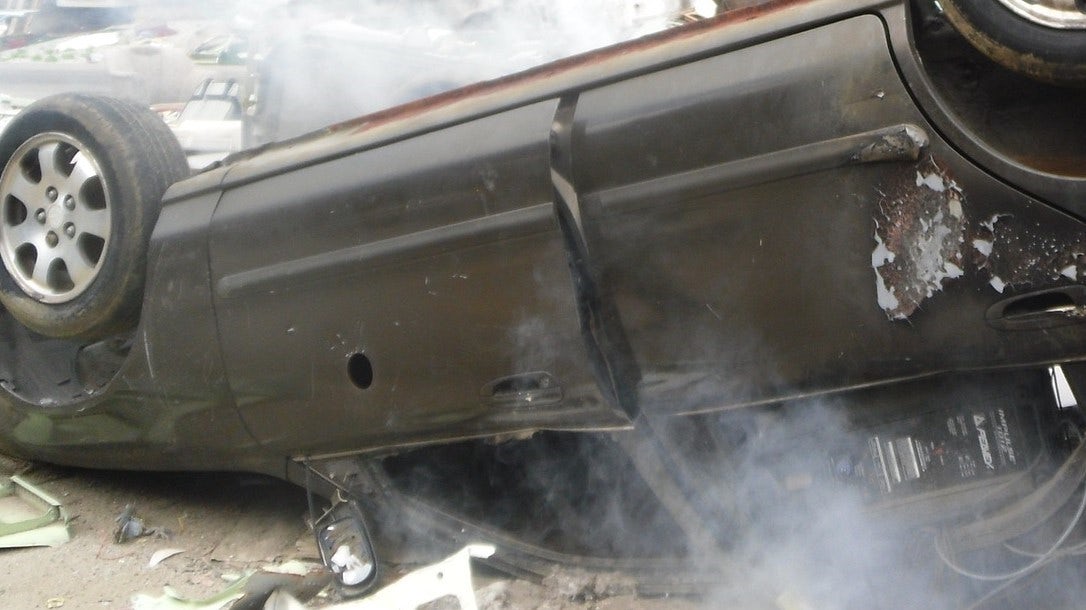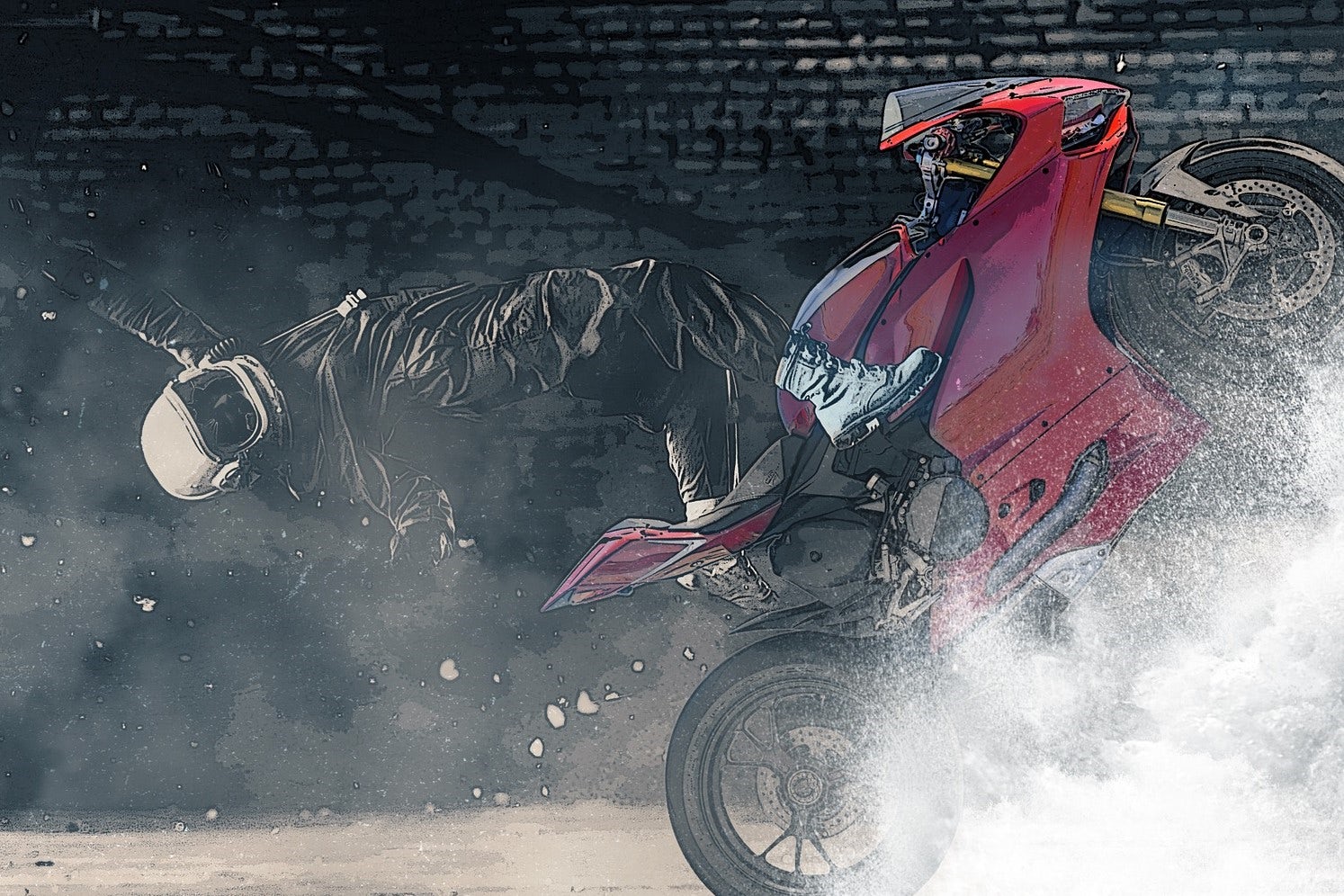
If you are involved in a crash or stop to give assistance:
- use your hazard warning lights to warn other traffic
- ask drivers to switch off their engines and stop smoking
- arrange for the emergency services to be called immediately with full details of the incident location and any casualties (on a motorway, use the emergency telephone which allows easy location by the emergency services. If you use a mobile phone, first make sure you have identified your location from the marker posts on the side of the hard shoulder)
- move uninjured people away from the vehicles to safety; on a motorway this should, if possible, be well away from the traffic, the hard shoulder and the central reservation
- do not move injured people from their vehicles unless they are in immediate danger from fire or explosion
- do not remove a motorcyclist’s helmet unless it is essential to do so
- be prepared to give first aid
- stay at the scene until emergency services arrive.
If you are involved in any other medical emergency on the motorway you should contact the emergency services in the same way.
Documentation

If you are involved in a collision which causes damage or injury to any other person, vehicle, animal or property, you MUST
- stop
- give your own and the vehicle owner’s name and address, and the registration number of the vehicle, to anyone having reasonable grounds for requiring them
- if you do not give your name and address at the time of the collision, report it to the police as soon as reasonably practicable, and in any case within 24 hours
If another person is injured and you do not produce your insurance certificate at the time of the crash to a police officer or to anyone having reasonable grounds to request it, you MUST
- report it to the police as soon as possible and in any case within 24 hours
- produce your insurance certificate for the police within seven days
What should you do at the crash scene?

Deal with Danger
Further collisions and fire are the main dangers following a crash. Approach any vehicle involved with care, watching out for spilt oil or broken glass. Switch off all engines and, if possible, warn other traffic. If you have a vehicle, switch on your hazard warning lights. Stop anyone from smoking, and put on the gloves from your first-aid kit if you have one.
Get help
If you can do so safely, try to get the help of bystanders. Get someone to call the appropriate emergency services on 999 or 112 as soon as possible. They’ll need to know the exact location of the incident (including the direction of traffic, for example, northbound) and the number of vehicles involved. Try to give information about the condition of any casualties, for example, if anyone is having difficulty breathing, is bleeding heavily, is trapped in a vehicle or doesn’t respond when spoken to.
Help those involved
- DO NOT move casualties from their vehicles unless there’s the threat of further danger.
- DO NOT remove a motorcyclist’s helmet unless it’s essential.
- DO try to keep casualties warm, dry and as comfortable as you can.
- DO give reassurance confidently and try not to leave them alone or let them wander into the path of other traffic.
- DO NOT give them anything to eat or drink.
Provide Emergency Care

Remember the letters DR ABC:
D - Danger Check that it’s safe to approach.R - Response Try to get a response by gently shaking the casualty’s shoulders and asking loudly ‘Are you all right?’ If they respond, check for injuries.A - Airway If there’s no response, open the casualty’s airway by placing your fingers under their chin and lifting it forward.B - Breathing Check that the casualty is breathing normally. Look for chest movements, look and listen for breathing, and feel for breath on your cheek.C - Circulation If the casualty is responsive and breathing, check for signs of bleeding. Protect yourself from exposure to blood and check for anything that may be in the wound, such as glass. Don’t remove anything that’s stuck in the wound. Taking care not to press on the object, build up padding on either side of the object. If nothing is embedded, apply firm pressure over the wound to stem the flow of blood. As soon as practical, fasten a pad to the wound with a bandage or length of cloth. Use the cleanest material available.

If the casualty is unconscious and breathing, place them in the recovery position until medical help arrives
If there are no signs of breathing, start CPR:
- Interlock your fingers, place them in the centre of the casualty’s chest and press down hard and fast – around 5 to 6 centimetres and about twice a second. You may only need one hand for a child and shouldn’t press down as far.
- For infants, use two fingers in the middle of the chest and press down about a third of the chest depth.
- Don’t stop until the casualty starts breathing again or a medical professional takes over.
Dangerous load

If an incident involves a vehicle containing dangerous goods:
- switch off engines and DO NOT SMOKE
- keep well away from the vehicle and do not be tempted to try to rescue casualties as you yourself could become one
- call the emergency services and give as much information as possible about the labels and markings on the vehicle. DO NOT use a mobile phone close to a vehicle carrying flammable loads.
Motorcycle crashes

Motorcycle crashes often lead to spinal injuries and multiple fractures. The helmet should therefore only be removed if truly necessary - i.e. if the victim is unconscious and the airway is blocked or likely to be compromised, or if CPR is needed.
